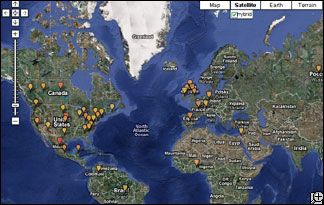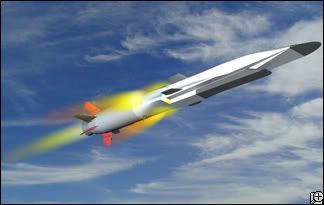The Latest Technology is THE place to get all of the Latest Technology Update ,News , Latest Invension, Technology Regarding Space,Human,Computer,Electronics,Machinary And Many More.
The Latest Technology is THE place to get all of the Latest Technology Update ,News , Latest Invension, Technology Regarding Space,Human,Computer,Electronics,Machinary And Many More.
Hubble Telescope to Get Final House Call

The Hubble Space Telescope is about to get one last house call. And never before have the risks been higher.
On Monday, astronauts will rocket away to the most famous telescope of modern times. They'll be taking up new scientific instruments, replacement parts for broken cameras and fresh batteries that should keep Hubble running for five to 10 years.
This cosmic-scale grand finale -- stalled seven months by a telescope breakdown -- will be NASA's most daring overhaul yet of the 19-year-old orbiting observatory, a captivating, twinkling jewel in the sky representing $10 billion of investment.
Never before have spacewalking astronauts attempted to fix dead science instruments on the Hubble, equipment that was never meant to be handled in orbit. Before they've just swapped out the whole thing at the telescope, which started out life shockingly nearsighted.
In all, five spacewalks will be performed in as many days by two repair teams. Two of the repairmen have visited Hubble before and, because of that, were chosen for this extraordinarily difficult job, on a par with operating-room surgery.
"Hubble needs a hug," said the chief repairman, John Grunsfeld, who will be making his third trip to the telescope.
Blue Laser Could Lead to Autism Cure

Lasers could one day cure, or at least aid in the search for drugs that treat diseases ranging from autism to schizophrenia, according to two new studies from the Massachusetts Institute of Technology and Stanford University and published in the online issue of the journal Nature.
A blue laser shined into a live mouse brain triggered gamma waves, which are a kind of brain wave necessary for concentration and cognition that people with autism and schizophrenia often lack.
"There are lots of theories about why [gamma wave oscillation] is impaired," said Li-Huei Tsai, a professor at MIT and a co-author on one of the Nature papers.
"This is the first proof that a specific set of neurons are responsible for gamma waves."
Swine Flu Outbreak Tracked With Twitter

Powerful disease-tracking tools, including those currently monitoring the spread of swine flu across the world, were once reserved for officials at the Centers for Disease Control and the World Health Organization. No longer.
Today, anyone can see the spread of diseases such as swine flu in real time, and alert public health officials to potential new cases by using Google, and now, Twitter.
"Our site used to update every hour," said John Brownstein, a physician at Children's Hospital Boston who, along with fellow CHB computer scientist Clark Friefeld, created the HealthMap swine flu tracking service, which was recently modified to include Twitter updates. "But that was too slow for the amount of information we've been accumulating, so we had to switch to a Twitter feed instead."
The new swine flu Twitter service launched Sunday morning with about 50 users. By Monday afternoon, more than 1,400 people had signed up to receive the latest swine flu news.
Hypersonic 'WaveRider' Poised for Test Flight

Hoping to bridge the gap between airplanes and rocketships, the U.S. military is preparing to test an experimental aircraft that can fly more than six times faster than the speed of sound on ordinary jet fuel.
Officially, it's known as the X-51, but folks like to call it the WaveRider because it stays airborne, in part, with lift generated by the shock waves of its own flight. The design stems from the goal of the program -- to demonstrate an air-breathing, hypersonic, combustion ramjet engine, known as a scramjet.
"We built a vehicle around an engine," said Joseph Vogel, the X-51 project manager with Boeing, which is building a series of four test planes under a $246.5-million program managed by the Air Force Research Laboratory in Dayton, Ohio.
New Race Car Runs on Chocolate

Scientists unveiled on Tuesday what they hope will be one of the world's fastest biofuel vehicles, powered by waste from chocolate factories and made partly from plant fibers.
Its makers hope the racer will go 145 mph and give manufacturers ideas about how to build more ecologically friendly vehicles.
The car runs on vegetable oils and chocolate waste that has been turned into biofuel. The steering wheel is made out of plant-based fibers derived from carrots and other root vegetables, and the seat is built of flax fiber and soybean oil foam. The body is also made of plant fibers.
Scientists at the University of Warwick say their car is the fastest to run on biofuels and also be made from biodegradable materials. It has been built to Formula 3 specifications about the car's size, weight, and performance.
Their claims cannot be independently verified.
They hope it can reach speeds of over 145 mph when it is tested on a racetrack in a few weeks time. They have driven it at around 60 mph and are now making final adjustments to the engine before driving it at top speed.
Warwick's project manager James Meredith said their model shows that it is possible to build a fast, efficient, environmentally friendly car.
The car, named the "WorldFirst Formula 3 racing car," will go on display at several races including the European Grand Prix and Britain's Goodwood Festival of Speed


